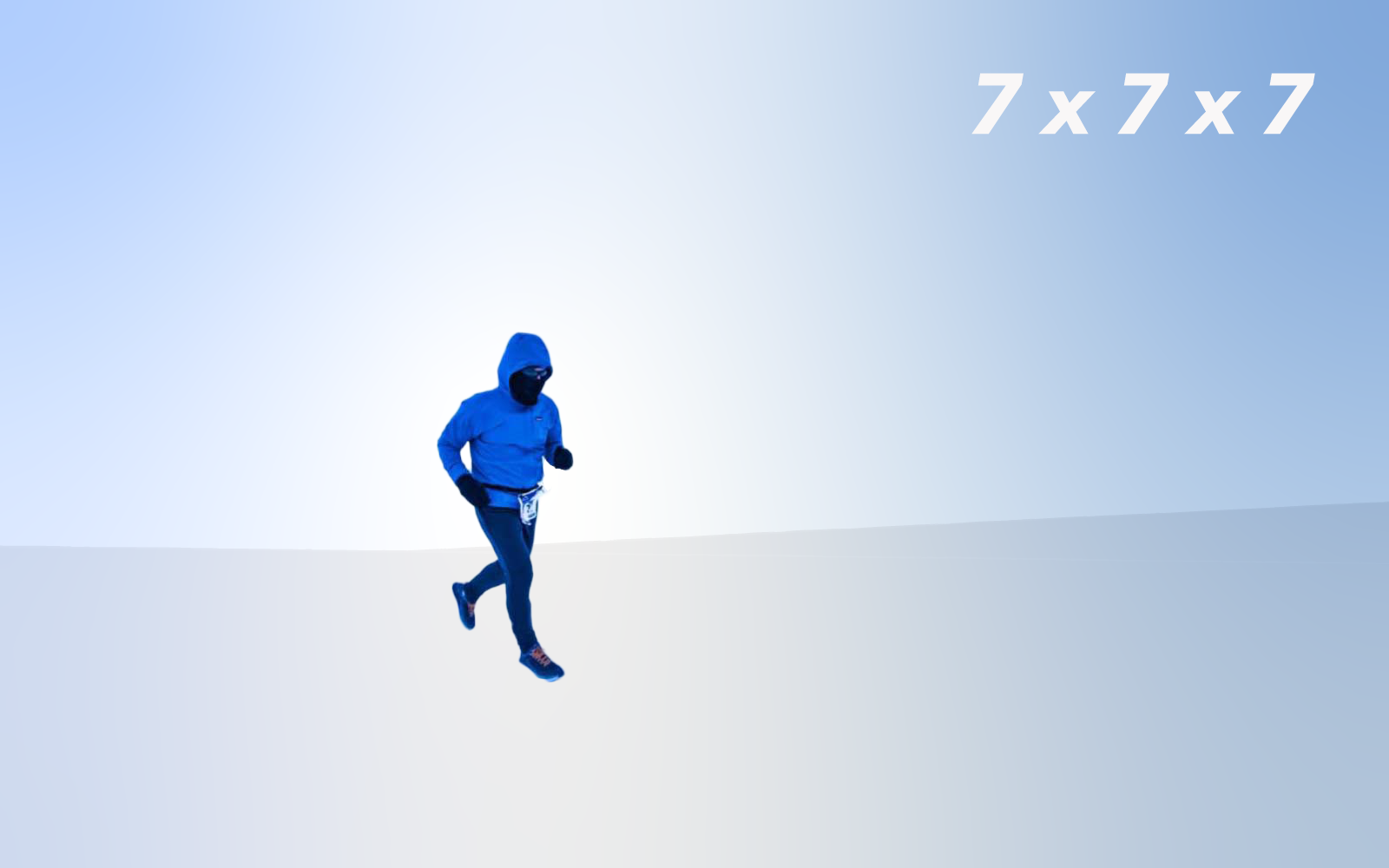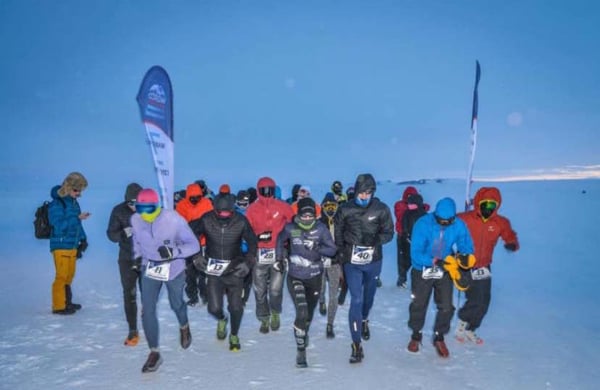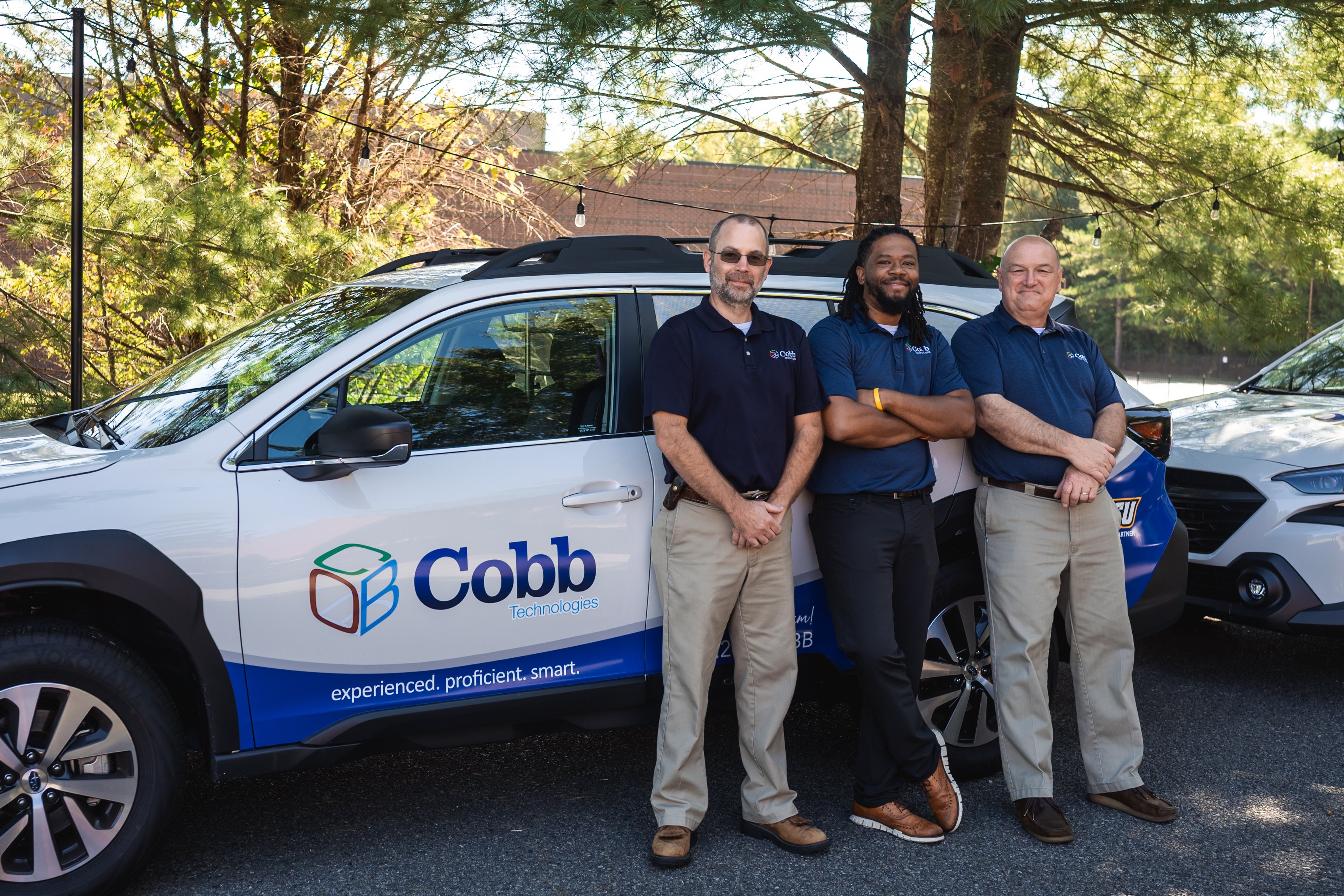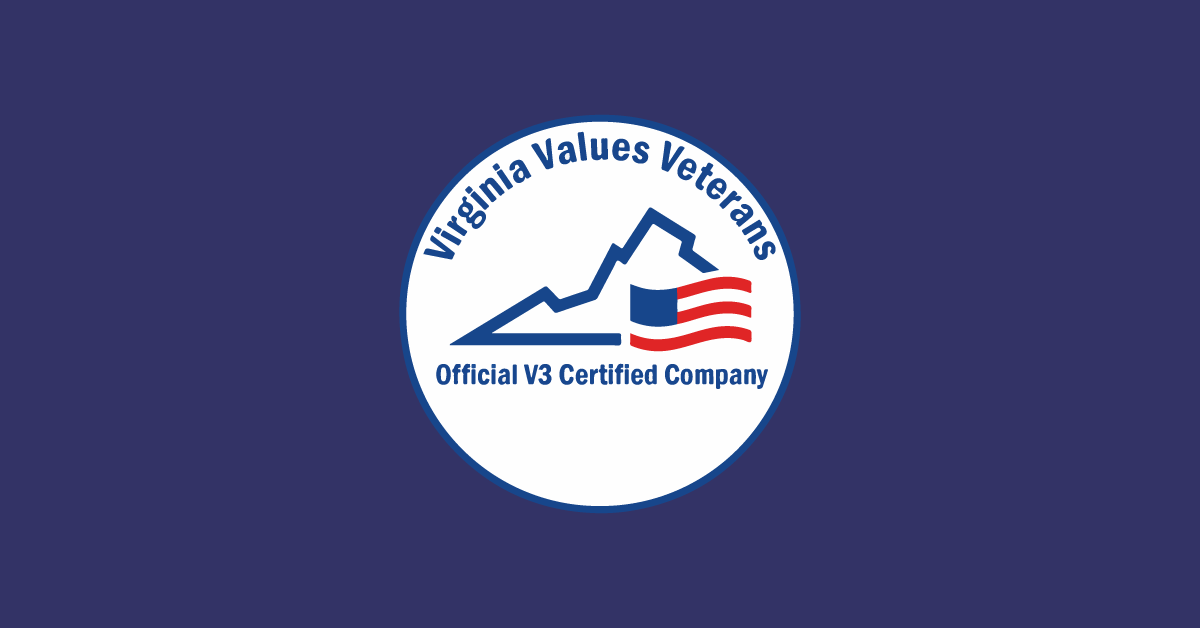3 min read
Building Culture That Works: Cobb Tech Named One of VA's Best
Cobb Technologies has been honored as one of the 2025 Best Places to Work in Virginia by Virginia Business and Best Companies Group. This prestigious...

On October 20th, Cobb Technologies Service Technician, Steve Scott, will run from Danville to Richmond over the course of five days. This 168-mile race is Steve’s newest charitable endeavor.
This isn’t his first charitable run, nor his first ultra-long-distance, boundary pushing race. In January of 2020, Steven joined 34 other elite long-distance runners in completing the legendary 7 x 7 x 7.
What is a 7 x 7 x 7? Participants complete seven marathons, on seven continents, over the course of seven days. Next week, we’ll be speaking to Steve about his current training for the Race to Richmond, but for now, we’re delving deep into his experiences during his 7 x 7 x 7.
This is part two of our 7 x 7 x 7 interview. Check back throughout the week for more installments.
That’s an amazing story. So, the 7 x 7 x 7 was popping into your head in the middle of the night. Did you know anything about it before this?
Well, in the past I had heard some stuff about it, but I never dwelled on it. Once it popped up, I got on the computer and did some research. There’s a woman up in Boston, here name is Becca Pizzi. She had held the world record up until 2020 for the women’s Boston Marathon, and she’s a veteran of the 7 x 7 x 7. So I reached out to her, and asked if she’d have time to talk.
Now, Becca has been on Good Morning America, ESPN, she’s been on all these crazy shows. So I’m thinking, “She isn’t even going to think about me!” But, I emailed her. And within eight hours, she had emailed me back!
We ended up talking, and I explained to her what my goals were, and she was so positive, and just encouraging me to go do it. She was pretty awesome. I was actually able to go up to Boston to meet her, and she showed me her PowerPoint of the do’s and the don’ts of the 7 x 7 x 7, which really helped me out a whole lot.
If you wouldn’t mind sharing some of those tips she gave you, what were they?
Well, a couple of tips were what not to eat. You know, try to stay off the sugars, stuff like that. Drink plenty of fluids, and she actually turned me on to a company where I was able to get my protein shakes custom designed for my body type.
The one thing that really helped was what she told me. She said, “When you get on the airplane, put your feet up.” After about the third marathon, I figured out why she said that. Because everybody else on the plane, their ankles were this big. Steve holds his hands up, creating a circle with his fingers about 5 inches in diameter.
What it was is because you’re up and down so much on the plane. The fluid builds around the ankles, and because of that, almost everyone had swollen ankles. And that really helped, because I didn’t have to endure that pain. Because that kind of pain that they were going through, trying to run with swollen ankles, it makes you feel sorry for people, cause it hurt.
Eventually, all of us started doing it, and by the fifth marathon, people were going pretty good by then. That was pretty cool.
Did you have to keep you feet up the entire time you were on the plane?
Probably about 80% of the time. You kept your feet up when you slept. While you watch TV, ate — it didn’t hurt, so I kept doing it.
She also gave me tips on what to wear for Antarctica.
Yes — I definitely want to talk about all seven continents, but I have to know about Antarctica. First of all, what did you wear?
Well, I wore three layers. I had an inner layer, which was like a dry-fit suit, practically skin tight. The top was rated for 20-30 degrees below zero, the bottom was rated for 10 below. I had the dry suit because I’m a sweater, and the biggest thing with Antarctica is when you’re going to run, you can’t sweat. Because if you start sweating, you get hypothermia, and you’re in trouble.
Then I had an inner layer that was loose, and then I had a windbreaker on the outside to break the wind. Of course I had my face gear, which was rated for 20 below zero, and you have to wear sunglasses, because if you don’t you can go snow-blind.
During the run I ended up having to grab something else because the wind was just so powerful, it would actually rip stuff off your head. So I had to go back and get some extra face protection, to block the wind from my skin. You have to be careful, or else you’ll get windburn. These were all things I had never had to worry about — I mean, who thinks about going snow-blind?
You have to wear special glasses, or else you can go totally blind.
So, when did the fact that you were actually doing this become real?
Probably about six months before I did it. Donations were coming in — everything just kind of fell into place. Things were really happening, and I had faith it would all work out. Once I accepted that, it all became real. You get excited, then you get scared too. The fear of the unknown. Steve smiles. You know, I’m from Danville Virginia, and I’m going to Antarctica to run — you know what I’m saying? He laughs even louder.
Six months before — that’s when it really started hitting me.
What was the first marathon of your 7 x 7 x 7?
The first race was in Cape Town, South Africa. The first marathon was supposed to be Antarctica, but what had happened was, we had gone to the airport, and had checked in, and all of a sudden, we got shut down because the weather in Antarctica had changed. At this point, it was probably 10 o’clock at night.
Let me tell you, the mental part of getting ready to go on a plane, to go somewhere and run, and you’re set to do it, and then you’re cut off, that’s a downer. So, we went back to the motel room to stay there, and we met the next morning for a 9 o’clock briefing. And by that point, they had told us were were leaving in an hour.
We ended up going back to the airport, and we checked all of our luggage in again, we went to the gate, and an hour later, they canceled the flight again. At this point, the director said because of the time limit we were on, we had to do a marathon that day.
So, we went ahead and did Cape Town that evening. There ended up being somewhat of a sandstorm during that one, because the wind was just crazy there. You ended up picking sand out of your eyes, nose, ears, everywhere. That was the first one we did.
I finished about 11 o’clock that night.
So, the next day, did you go to Antarctica?
Yeah — once you start that first marathon, we were on a time crunch. You only have so much time to get the 7 done. So we got up the next morning, loaded up, and we ended up calling a Russian cargo plane to fly us in. It was made to handle the weather conditions, and it was such a huge plane. It was a five hour flight to Antarctica.
The craziest thing about Antarctica, when you look out of the window while you’re going in, you’re over the ocean. And as you're flying, the ocean turns to ice, slowly. It was so cool. We landed on ice, because there was no runway. The crew there have a tractor they use to bulldoze to make a natural runway.
We got off the plane, and once you were on the ground, it was 30 mile-an-hour winds. I mean, it was so cold. It was just cold. From there, they put us on some sleds and took us to a trailer to wait. And we just sat in there and waited — at that point it was just a waiting game. An hour later, the crew came in and they told us there was a delay because they had to redo the track we were running on.
We were going to go around a circle eight different times, but they had to bring it in smaller because the conditions were so bad. So we ended up having to run around a smaller circle 16 times. The reason they did that was because the whiteout conditions were just crazy, and by having a smaller circle, they could at least watch and keep eyes on people while they were running.
But yeah, that Steve laughs, that was cold. Real cold.

Do you know what the temperature was?
Yeah, it was 25 below.
And that was summer in Antarctica, correct?
Uh, yeah, somewhat, it you want to call it that. Steves laughs heartily. It was 30 mile-an-hour wind, and 25 below, the whole time. It didn’t let up one bit.
How long were you running?
Six hours and twenty minutes. During the 7 x 7 x 7, I was running usually in the 3’s, but this one, it was six hours. It was crazy. Snowdrifts, running on blue ice, headwind, and tailwind. On the tailwind, you could run real well — but then once you made that turn, you just had to lay and go.
About mile 16, people started getting smart. What I did was, I asked two people from New York, “Do you want to team up?” We ended up barricading each other on the windy side. So what we did was two would be in front, one was in the back, and we would block each other. Every couple of minutes we’d switch, rotate.
That’s how we got through it. You could stay warm at that point, but when you hit that wind, it was just unbelievable. And when you’re going through two or three feet of snow in some areas, you’re just trying to get through.
A lot was going through my mind at that point. Because once you get to a certain point in Antarctica, you lose all contact with civilization. No contact. And that was kind of weird. You don’t have contact with anyone else, because there’s nothing over there. But we got through it.
That was tough. It was a tough, tough run. I think about that a lot when I get in situations when I run now. It helps me mentally get through things too.
I bet. What kind of boots did you wear?
I wore my running shoes. Yep.
How did your feet not freeze off?
Well, I was very blessed to be told what kind of socks to wear. So, the socks I had on were very warm socks, and kept my feet pretty warm. There were different things Becca had told me about running in Antarctica, about not stopping, not standing around, to keep your feet moving. That’s your priority — because if your feet get cold, that’s when you’re in trouble.
I would say at the end, they probably started getting a little cool on me, but I wore my running shoes, and kept gettin’ it! Steve smiles.
You mentioned you teamed up with other runners for this race. Were these marathons races where you competed against each other, or was it more just to get it done?
No, we were competitive. You had some people in there that were there just to get it done. And that’s okay. And I was there to get it done and get it completed too, but I still wanted to be somewhat competitive, and be smart about what I was doing.
I think I finished 12th overall, and it was 35 of us, and I finished in the middle. I’m 58 years old, so I felt pretty good finishing right there, close to the top. A couple of runs I finished in the top 10. Australia was my best marathon, I finished in 3:48. That was my third marathon. That was my fastest one out of the whole thing.
One last question about Antarctica. What was the landscape like?
It was flat. In Antarctica during the summer, it never gets dark. It’ll get to dusk, and once it was a little darker you could look out and see little mountains, by themselves. It was beautiful, especially when the sun would come back up a little bit, and you could see the orange over the mountains. But most of it is just a flat as a pancake. And snow everywhere. Steve Laughs.
It was pretty cool. Wouldn’t go back.
Join us tomorrow for Part 3, the final installment of our interview with Steve Scott. To sponsor his upcoming 168-mile run from Danville to Richmond, visit Imprint's CobbtoberRun 2020 here.

3 min read
Cobb Technologies has been honored as one of the 2025 Best Places to Work in Virginia by Virginia Business and Best Companies Group. This prestigious...

5 min read
Cobb Technologies is honored to hold the SWaM (Small, Women-owned, and Minority-owned Business) certification, awarded by the Commonwealth of...

5 min read
Every year, thousands of Veterans transition from military service to civilian careers in Virginia, bringing invaluable skills and experiences to...